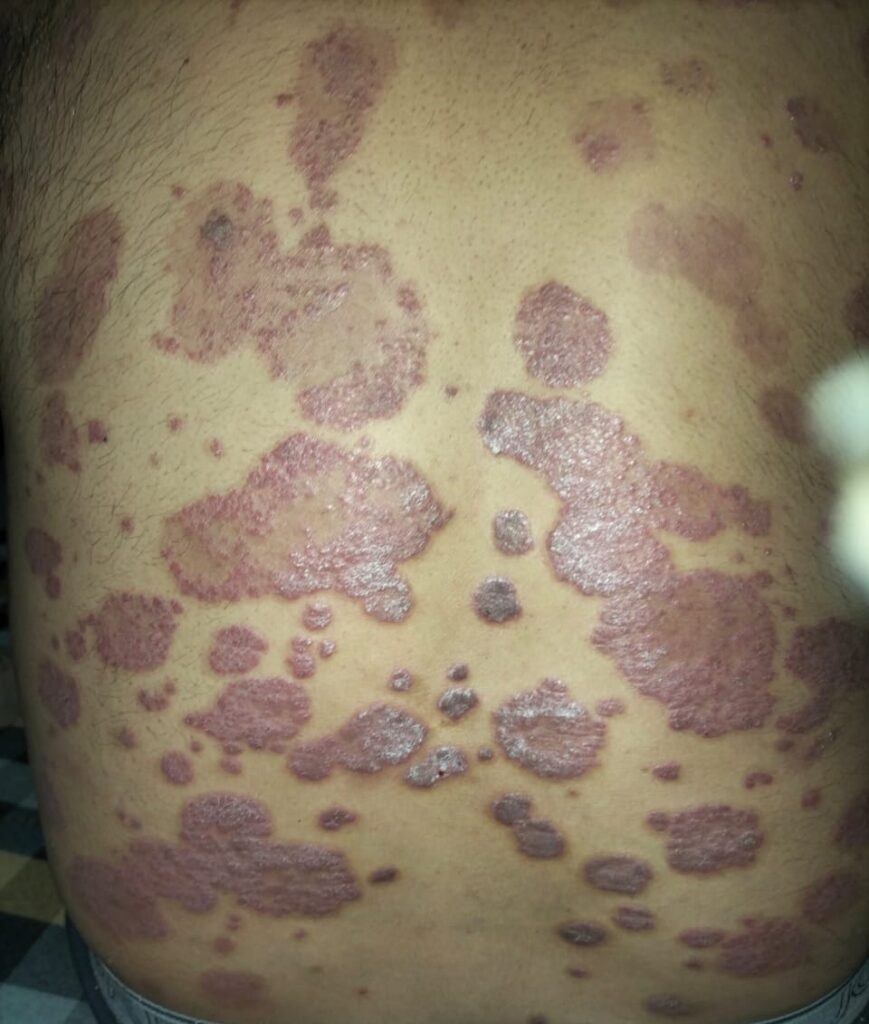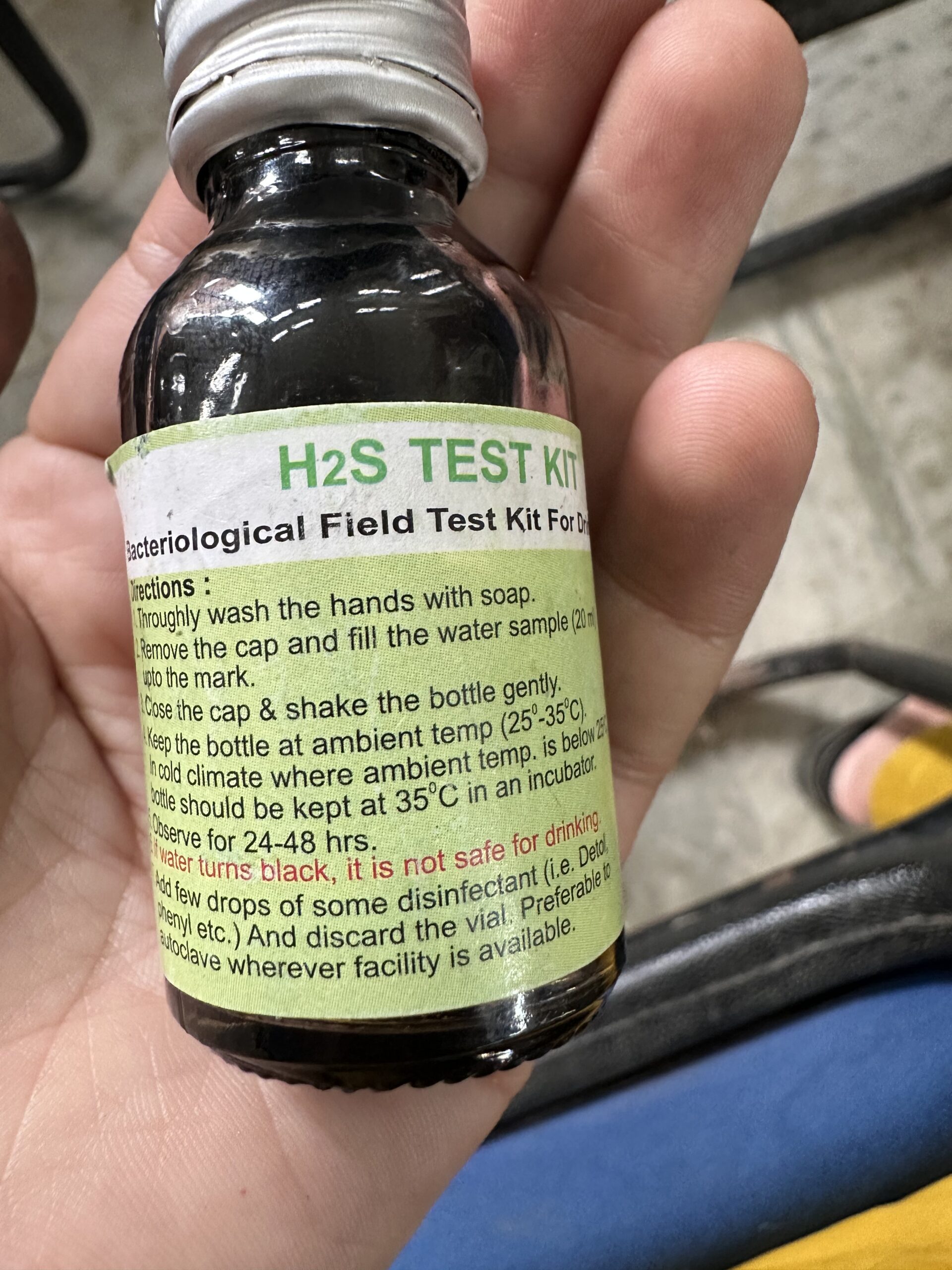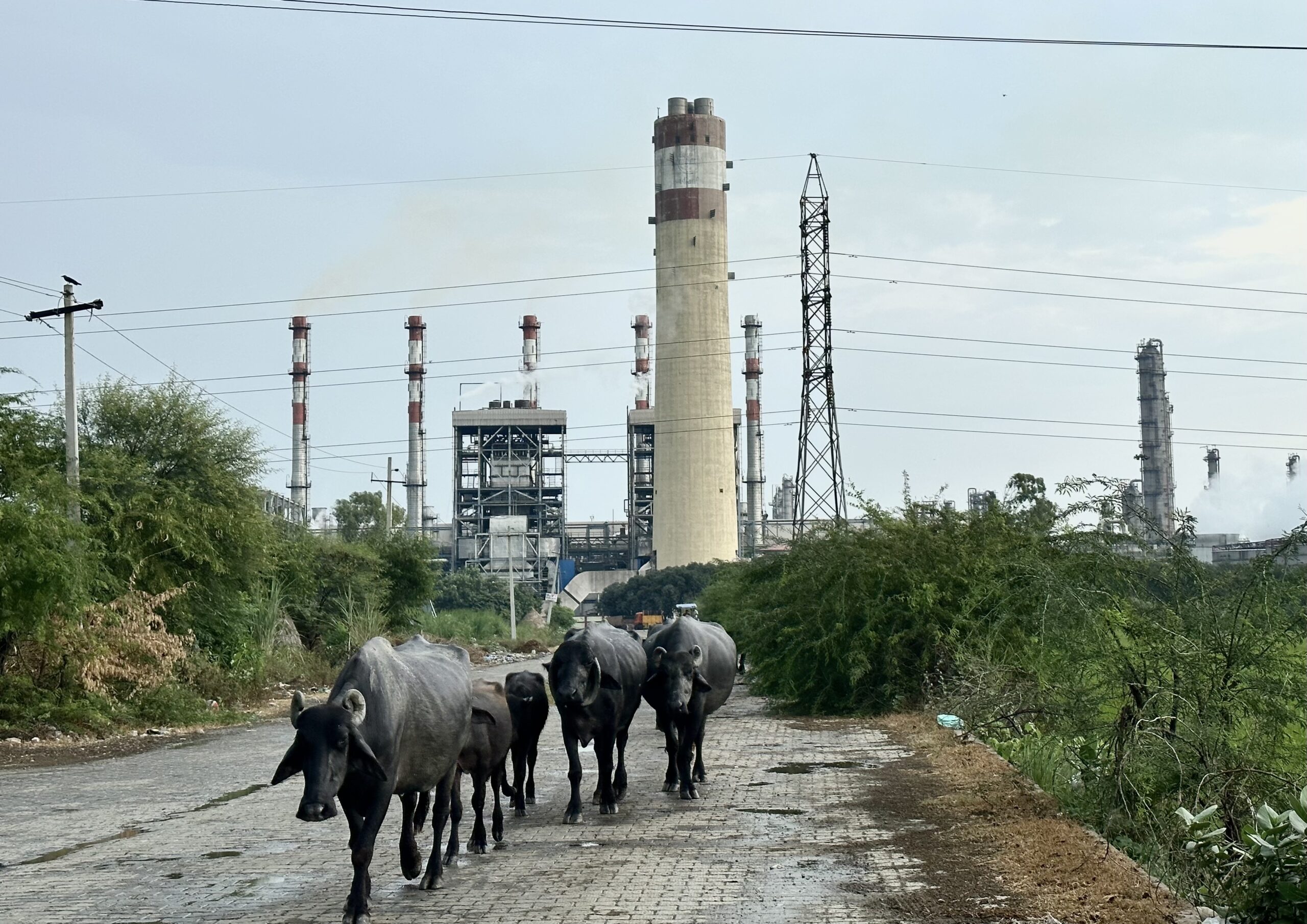“If our crops get damaged, and our cattle are failing to reproduce, one can easily imagine what this refinery must be doing to humans here”, said Satpal Singh, the ex-sarpanch of Singhpora village in Panipat.
Almost all community members residing in the surrounding villages near the Indian Oil Corporation Ltd. Panipat Refinery and Petrochemicals, Haryana, present this analogy. The people have observed tangible changes in agricultural crops resulting from toxic air emissions. Healthy crops get scorched overnight and the lush green leaves wither into dryness. If the impact is so real on crops, why would people living in the vicinity remain immune to it?
The Panipat refinery was commissioned in 1998 and is spread across 4,222 acres of land. The refinery emits poisonous gases, disposes toxic wastes like spent catalyst and discharges contaminated effluents in its surroundings. Singhpora-Sithana gram panchayat is a smoke-laden village situated to the south-eastern side of the Panipat Refinery. The wind direction of the region is predominantly towards the south-east direction, so the villages like Singhpora-Sithana, and New Bohli are more affected by the impacts of air emission released by the refinery.
These villages along with Bal Jattan, and Razapur have increased water contamination since they are located within a 3-kilometer radius of the Polishing Pond, a water storage where the effluents of the refinery are dumped into the ground without any kind of nonpermeable layer.
The impacts of these violations are faced by communities which are economically weak and historically marginalised. Sixty-eight percent of Singhpora-Sithana’s population are from Dalit community, and while in Razapur the Dalit population is eighty-three percent.
Impact on Health
Poonam, 34 years old, from Singhpura had joined Panipat refinery on contract basis seven years ago after her husband died in a nearby canal. Within four months of joining, Poonam started developing rashes on her body. From trying private clinics in Panipat to Civil hospital, medicines and ointments, her condition still remains the same.
Visibly looking frail, Poonam rolled her shirt sleeves to reveal allergy marks etched on her slender arms. She invited one of the female interviewers inside the room to show the impact of allergy on her whole body. The marks bore witness to the profound toll her condition had exacted on her body. There are deep scars on her body, open wounds resulting from persistent itching, and some wounds were covered with clotted blood.
The skin allergies with symptoms like rashes, dryness, red bumps, itching, blisters, etc. are rampant in these villages. Almost each household has an individual who is suffering from skin allergy. For some individuals, like Poonam, the condition is persistent and they have found no cure for it. Other people, including children, are affected by allergies every now and then, which mostly exacerbate during summer time.
The contaminated groundwater and air pollution is pointed as one of the main reasons for skin allergies. Whenever Poonam visits her mother’s home in Diwana, Haryana which is around 20 kms far from Singhpora, her skin condition starts to get better.
“Medicines give respite for the time being, but once it’s stopped skin allergy reappears. The long-term intake of medicines had taken a toll on my health and now I no longer take it”, said Poonam.
These persistent health issues witnessed by communities is a new phenomenon which is happening at a scale they have never experienced. Apart from skin allergies, respiratory complications like shortness of breath, wheezing, eye irritation, etc. are on the rise. Locals allege that during night time emissions released from the refinery makes it further difficult to breathe, especially for elderly people.
Due to the lack of proper health impact assessment in these villages, there is no data available on how many people are affected by skin allergies or respiratory diseases. The social taboo around diseases such as asthma also makes it difficult to access concrete data.

Kusum Rani, an Accredited Social Health Worker, or ASHA worker from Sithana reaches out to 1,350 people in her community and is responsible for monitoring maternal and neonatal care, undertaking online surveys for diseases like hypertension, diabetes, cancer, tuberculosis, leprosy etc.
Kusum’s husband is also suffering from a severe case of skin allergy. Her on ground engagement with the community reveals that the toxic environment is affecting pregnant women and the health of children.
“I started working from 2006, and we are noticing that the growth of the foetus is slow despite the mother taking health supplements during pregnancy. In many cases, both mother and child are anaemic”, said Kusum.
The low birth weight and cases of growth delay amongst children are reported by ASHA workers in Singhpora, Sithana, Bal Jattan, etc. Children as young as eight year olds have premature greying of hair. For Kusum, some of these issues are peculiar to villages around the refinery; she doesn’t hear it from her colleagues stationed elsewhere in Panipat.
In Singhpora, 3 people have died due to throat and stomach cancer in 2019-2020. In Bal Jatan, around 4 deaths occurred in 2023 due to cancer as per the local ASHA worker. In all these villages there are active cancer cases as well, but due to the lack of health assessment the community can only ascribe these cases to toxic air emissions but cannot prove it.
Groundwater Contamination & Toxic Air Emissions
In 2018, Satpal Singh, a former sarpanch of Singhpora-Sithana along with other community members, filed a case in National Green Tribunal (NGT) against the Panipat refinery for violating environmental norms.
In response to the filed complaint, the NGT levied a substantial fine of Rs. 42.5 crore on the refinery. Furthermore, the NGT formed a joint committee of representatives from the Central Pollution Control Board (CPCB), Haryana State Pollution Control Board (HSPCB), and the Deputy Commissioner of Panipat to investigate the matter and support the remedial action plan.
The committee documented the Panipat refinery’s transgressions, revealing that ambient air quality at various locations, both within villages and on the refinery premises, exceeded prescribed norms. The committee’s observations included indicators of volatile organic compounds, such as eye irritation and odorous emissions. Furthermore, the untreated effluent was found discharged in green belt area outside the premises of the unit and was lying stagnant as a cesspool which may cause spread of odour in the nearby areas.

Despite NGT’s action and reporting of these violations, the situation has not changed on ground. Panipat refinery continues to flout environmental norms. Groundwater still remains contaminated, and emissions are released every night, as per the locals.
The Headmaster from Government Middle School, Bal Jattan had conducted the H2S test for water quality in September 2023. The H2S is a simple bacteriological testing kit that is used to indicate the presence of pathogens, and it revealed contamination in the groundwater that the school staff and the children use. Testing indicated that if water turns black then it is not fit for consumption. Holding the sample bottle with black water inside, the headmaster appeared visibly helpless.“We never have full attendance in classes. Everyday students complain of sickness”, said headmaster.
Similarly, a water quality test conducted at the District Water Testing Laboratory, Panipat, in December 2022, revealed that the drinking water from Government Senior Secondary School, Sithana, surpassed acceptable Total Dissolved Solids (TDS) limits. With a TDS level of 1,640 mg/L, the water fell into the ‘very poor’ category, rendering it unsuitable for regular consumption. Total Hardness, Calcium, Magnesium, Iron, and Total Alkalinity also exceeded acceptable limits.
On the contrary, the Bureau of Indian Standards (BIS) has established 500 mg/L as the acceptable limit of Total Dissolved Salts (TDS) in drinking water. The standard states that if no other source of drinking water is available, this acceptable limit can be reduced to 2,000 mg/L. However, the World Health Organization (WHO) recommends a TDS level of less than 300 mg/L for drinking water.
Simultaneously, air quality in the villages remains subpar. Villagers reported frequent gas leaks from the refinery, occurring 3-4 times annually. These emissions were particularly intense at night, accompanied by a distinct rotten smell indicative of SO2 emissions. Allegedly, excess emissions occurred during the night to evade detection, as residents were indoors and less likely to identify the refinery as the source.
Orphaned Villages
“Refinery officials say that they have adopted Singhpora-Sithana and Bohli villages, but they don’t bother to offer us any support”, said Nirmal Singh, a local contractor and social activist from New Bohli.
The villages surrounding the refinery, especially Singhpura-Sithana lack basic medical facilities. The Public Health Centre (PHC) and sub-centre designated for Singhpura-Sithana village, as well as New and Old Bohli Panchayats, are inconveniently situated in Rarekalan and Bal Jattan, approximately 13 km and 7 km away, respectively. Ironically, the staff at the Rarekalan PHC have proposed relocating the PHC for Singhpura-Sithana and Bohli Panchayats to Kabri, a closer location.
With the absence of hospitals in affected villages, residents are left to depend on local medical shops for both treatment and the procurement of medicines, or they travel to Panipat city for treatment.
Villagers claim that the refinery has never conducted any health camp in their village. “The mobile medical van from the refinery comes to the village only 2 days in a month and that too after a lot of petitioning and pressure. The van has only a compounder who prescribes medicines and only medicines up to a limit of Rs 150 is distributed to the people. The refinery has done little to improve the local community’s access to healthcare”, said Nirmal Singh.
In reviewing IOCL’s Corporate Social Responsibility (CSR) action plan for the fiscal year 2023-24, it becomes apparent that a substantial amount, Rs. 7.94 crore, is earmarked for sanitation and drinking water projects in Uttarakhand, Tripura, and Kurukshetra (Haryana). Meanwhile, out of the Rs. 169 crore designated for healthcare and nutrition facilities, a meagre Rs 6.34 crore is allocated for TB elimination in Haryana.
“IOCL chooses to divert its CSR funds elsewhere, neglecting the very communities that bear the consequences of their environmental violations,” said Nirmal Singh.
Contrary to the adoption claim, the grim reality reveals that the Panipat refinery has essentially orphaned the affected villages. No substantial measures have been taken to enhance healthcare or develop essential infrastructural facilities. More importantly, the refinery is not taking any action to put an end to the environmental violations which are responsible for health issues in affected villages.
Picture Credits: Fouziya Tehzeeb
Centre for Financial Accountability is now on Telegram and WhatsApp. Click here to join our Telegram channel and click here to join our WhatsApp channel and stay tuned to the latest updates and insights on the economy and finance.





